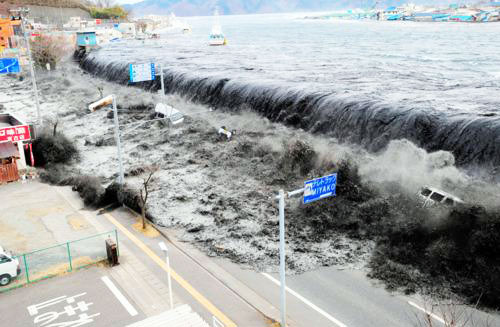BRUCE PARKER Physical Oceanographer, Stevens Institute of Technology; Former Chief Scientist of the National Ocean Service in NOAA and Director of the Coast Survey Development Laboratory; Author, The Power of the Sea: Tsunamis, Storm Surges, Rogue Waves, and Our Quest to Predict Disasters

WHEN WE CANNOT PREDICT
Prediction is the very essence of science. We judge the correctness a scientifictheory by its ability to predict specificevents. And from amore real-world practical point of view, the primary purpose of science itself is to achieve a prediction capability which will give us some control over our lives and some protection from the environment around us. To avoid the dangers of the world we must be able to predict where and especially when they will happen.
While the scientific method may lead us to a reasonably thorough understanding of some phenomenon, unfortunately that does not always translate into an accurate practical prediction capability that, for example, might help us avoid being killed by a natural disaster. When that is the case, we then find ourselves talking about risk, the likelihood that some dangerous event will take place, even though we do not know when. Risk assessment is necessitated by an inability to predict. That inability to predict may come from some deficiency in our knowledge, or it may be the result of a great complexity inherent in the phenomenon (for example, we may not have high-enough-resolution data to represent it, or the process may have a chaotic component that keeps us from determining exactly when it will occur). We are then left only with probabilities.
Along the way to understanding a natural phenomenon we, of course, develop and employ various types of technology. Such technology is typically used to measure the phenomenon and thus provide the data that will stimulate the analytical human mind to develop appropriate scientific theories. More data are then used to test those theories. Ultimately technology will also (hopefully) take the form of a warning system, a computer model (representing an accepted scientific theory) that uses real-time data. In the meantime, other technology will improve the methods of protection against such disasters.
The tsunami that struck northern Japan (where the death toll will likely surpass 25,000) is the latest tragic example of our inability to predict when it matters most. The tsunami's arrival at coasts more distant than Japan was accurately predicted by hydrodynamic computer models, once the location of the submarine earthquake was determined and the generation of a tsunami was confirmed by real-time data from DART buoys and tide gauges. (Such a confirmation is required because most submarine earthquakes do not produce tsunamis and the numerous false alarms that would result from warnings based only on the occurrence of a submarine earthquake would make the warnings useless.) But when the epicenter is so close to the coast that the tsunami arrives only 30 minutes after the earthquake, the only possible warning is a receding ocean prior to the tsunami or the earthquake itself (when a coast shakes for a long time, one is wise to play it safe and act as if a tsunami will be coming very soon). The Japanese are the most tsunami aware people on Earth, and they did immediately run to roof tops and inland. But 30 minutes is not a very long time. (It was even worse in northwest Sumatra in 2004, when an even larger tsunami struck only 15 minutes after the initial earthquake.)
The only way that a more advanced tsunami warning could have been given is if the earthquake itself could have been predicted. But we cannot predict when an earthquake will strike, not the day, or the month, or the year, or even the decade. All we can do is assign a risk to particular regions. Japan, with its numerous tectonic plates butting up against each other, is known to be a high risk area; many earthquakes and tsunamis have occurred there before. As a result, some sea walls had been built and some buildings had been made stronger. Technology contributed to those defenses. But they were not enough, and in fact, could never be enough, without huge sums of money being spent to build 40-foot sea walls along almost the entire Japanese coastline and to make all buildings capable of surviving the very rare 9.0 earthquake.
More effective would be to pour a small fraction of that cost into additional earthquake prediction research (an earthquake prediction capability would have saved even more lives in Haiti). With the great complexity of the worldwide tectonic environment, understanding what makes two tectonic plates suddenly release each other, much less being able to predict when earthquakes will occur using a detailed geophysical model, is still very far off. But using technology to continuously measure the various signals that the solid Earth provides, until we find signals that only come in advance of an earthquake, may be possible a lot sooner. Based on past accomplishments we can be justified in being optimistic that human intellect will someday find a way to predict when an earthquake will happen. But we need to speed up that process, because in the future more lives will be at stake. Whatever additional funds are required to make that happen would certainly be money well spent.




